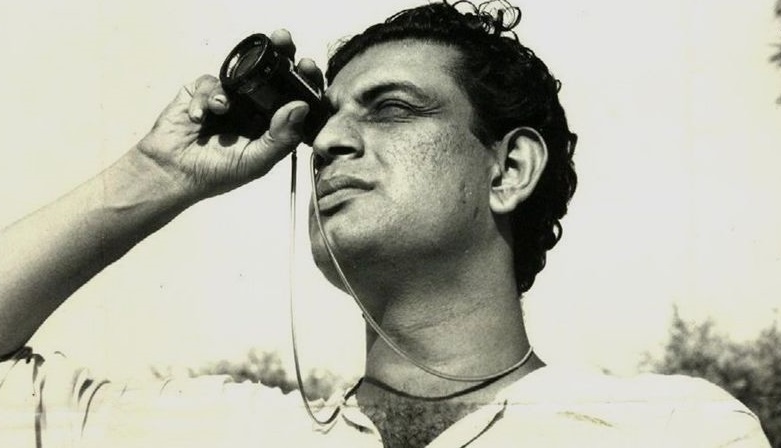Panther Panchali, a film that struggled to be created though a major financial crisis yet, a result of hope not being lost. Panther Panchali is a Bengali – language film released in 1955. It was the directorial debut of Satyajit Ray, one of the greatest film makers of the 20th century.
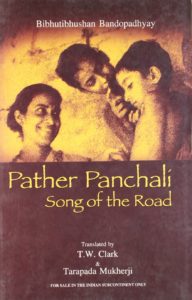
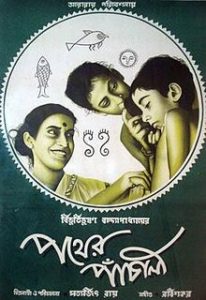
Panther Panchali in English stands for “Song of the Little Road.” It was a 3-year long project which was an adaptation of a Bengali novel under the same name, written by Bibhutibhushan Bandyopadhyay. The movie was the first installment of the Apu Trilogy. It depicts the childhood of the protagonist Apu played by Subir Banerjee.
The movie was the commencement of Indian parallel cinema. Devoid of dance and song routines, and a glamorous star cast, this movie was social verity depicted through art. Panther Panchali showcased a realistic portrayal of a harsh village life in a recently made independent India.
It showcased a family where there was a father trying to earn bread, and cater to his family as well as paying off ancestral debts. Apu’s father – Hrihar is a priest who earns little through the religious ceremonies he performs; he dreams of being a poet and a playwright and intends to pay of all his debts and go on to become a reputed scholar. His wife Sarbajaya takes care of their two kids Apu and his elder sister Durga. She is woman who tries to make ends meet. She supports and believes in her husband. But at the same time, she too, like all dejected individuals, loses hopes and gets frustrated and feels burdened due to the troubles bestowed upon her and her family. The oldest character is that of Indira who is a very old cousin of Harihar. She lives with the family and is a victim of Sarbajaya’s regular taunts.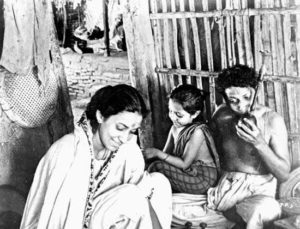 Satyajit Ray states that there were three miracles that saved his movie “One, Apu’s voice did not break. Two, Durga did not grow up. Three, Indir Thakrun did not die.” The movie was stopped many times during its fliming due to unavailability of funds. Loans were taken, Ray continued to work as a graphic designer to generate funds, sold his collection of gramophone records, and pawned his life insurance as well. The Production Manager had even convinced Ray’s wife to pawn her jewels. Thus, the movie was the riskiest venture of Ray’s life but the fact that he did not give up on it and took this massive risk for the sake of his love and passion for cinema, resulted in Indian Cinema being finally recognized internationally. Panther Panchali won the best Human Document Award in 1956 Cannes Film Festival. This was the beginning of the career of the man who later on went to receive an Honorary Doctorate from Oxford University, making him the second personality after Charlie Chaplin to be honoured so highly by the institution.
Satyajit Ray states that there were three miracles that saved his movie “One, Apu’s voice did not break. Two, Durga did not grow up. Three, Indir Thakrun did not die.” The movie was stopped many times during its fliming due to unavailability of funds. Loans were taken, Ray continued to work as a graphic designer to generate funds, sold his collection of gramophone records, and pawned his life insurance as well. The Production Manager had even convinced Ray’s wife to pawn her jewels. Thus, the movie was the riskiest venture of Ray’s life but the fact that he did not give up on it and took this massive risk for the sake of his love and passion for cinema, resulted in Indian Cinema being finally recognized internationally. Panther Panchali won the best Human Document Award in 1956 Cannes Film Festival. This was the beginning of the career of the man who later on went to receive an Honorary Doctorate from Oxford University, making him the second personality after Charlie Chaplin to be honoured so highly by the institution.
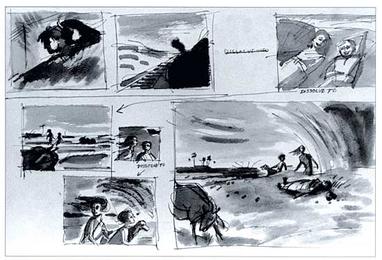
Another interesting fact is that Panther Panchali did not have a script. In fact, it was derived from Satyajit Ray’s notes and drawings. There were no high profile digital storyboards at that time. But, this movie was derived from a very basic storyboard which represented the sequence of events. Later, these drawings were donated by Ray to Cinémathèque Française; a French Film Organization (a museum of Film documents and related artifacts from around the world).The movie successfully portrays each character with poise and perfection. There is a rawness in the film which makes it stand out brilliantly. 63 years later, even today if you watch the film, you will get a realistic glimpse of how rural life was and how much we have progressed today. It is a movie that lives through time. Pather Panchali is a must watch for anyone who looks at cinema from an angle other than commercial. The story speaks for itself and so does each character. It is thought provoking and at the same time fills one with gratitude to realize how far we have come as a nation in such a short span of time. Panther Panchali is truly a piece of art and vision.

